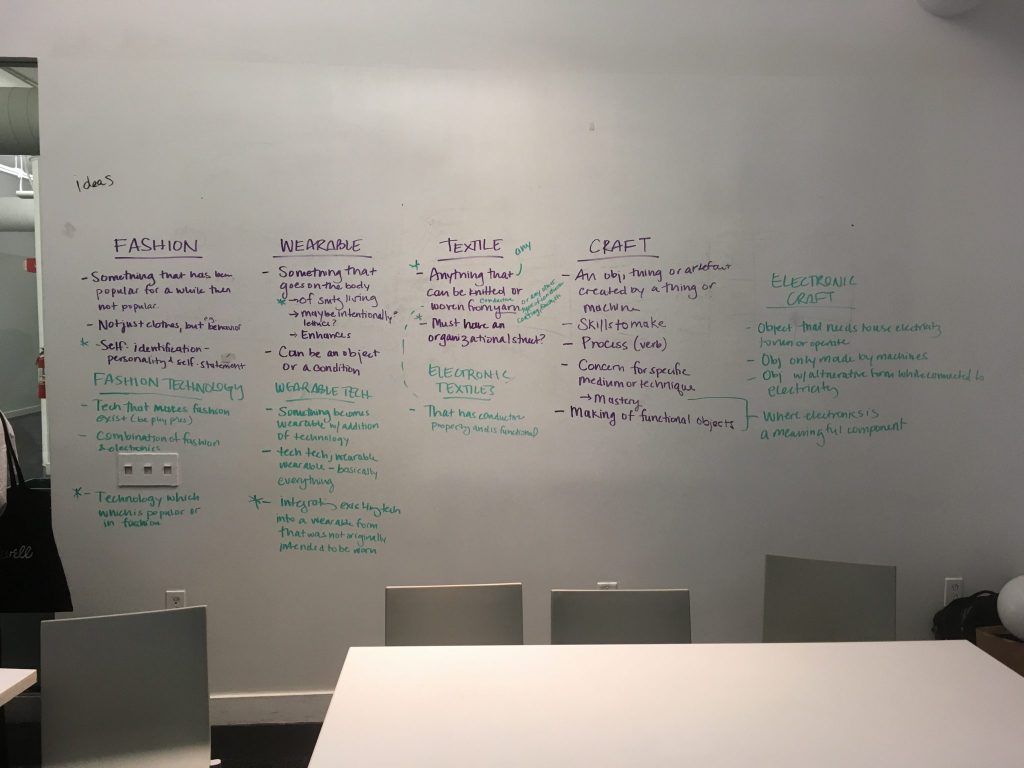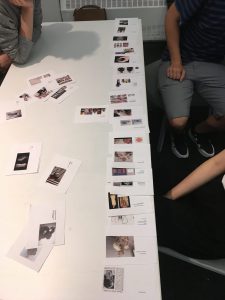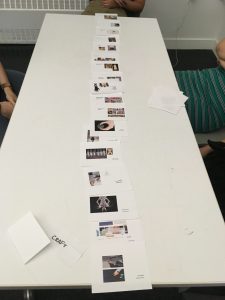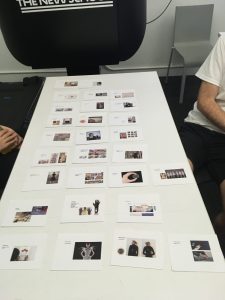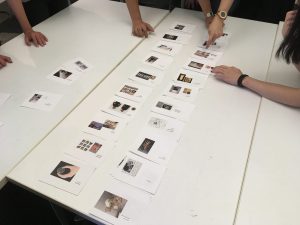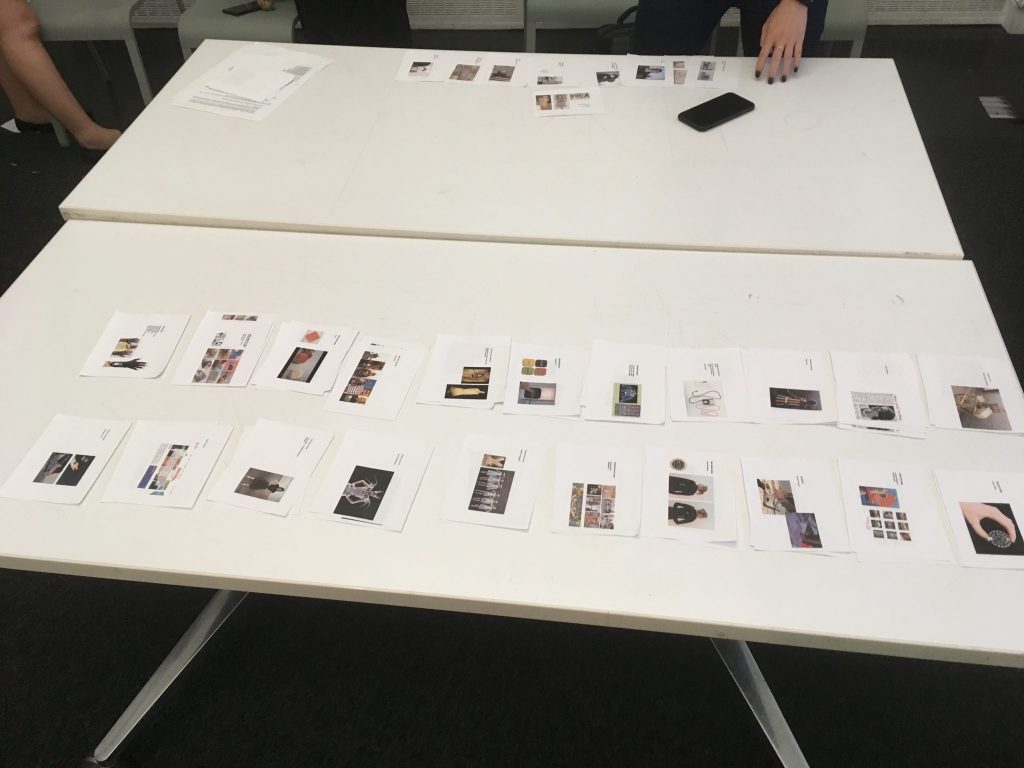Author Archives: admin
Midterm Assignment
TRACK 1
Design a lamp using the techniques, tools, and materials we have been learning over the course. Lamp and presentation are due OCT. 18. You will have seven minutes total to present. I suggest 5 minutes for presentation and 2 for feedback. You do not need to have a slide deck unless you want to. You should plan to demo. Instructable due Tuesday, Oct. 23.
Constraints:
1) MUST use a switch or sensor. RE: You must have a way of controlling the circuit.
2) Must have at least two states (e.g. on/off, fading fast/slow, red/blue, etc) or more.
3) You do not have to use Arduino.
4) You cannot use jumper wires *unless* it is to connect your circuit traces to the Arduino. In this case, you should consider how to integrate your Arduino into the design. Depending on your time and financial constraints, you may want to explore other types of Arduinos that better fit your design, such as a Lilypad, Flora, Gemma, Arduino Mini, etc.
5) The midterm is an individual project.
NOTE: Please do not use a breadboard for the same reasons as the Arduino constraint above. Again, the goal of this project is to evaluate your comprehension of the materials, techniques, and processes. Only using wires and a breadboard or Arduino will not help me understand that you have mastered what we have been doing in the semester.
I will be evaluating you along the following categories:
Process
– Paper prototyping interaction and structure
– Grasp of assembly and how to integrate electronics with materials
– Material is appropriate for the project
Concept + Design
– Clear design goal
– Desired interaction accomplished (What should the user be doing or feeling? What action do you want them to perform?)
– Intuitive interface (or convoluted depending on the design goal)
– Articulated audience – who is this for?
TRACK 2
You may propose another project for the midterm, but it MUST be approved by me first. This can take the form of in-depth material research, etc.
ALL TRACKS
Documentation
– Create an Instructable documenting your project. Due October 23.
DUE OCTOBER 11
Post initial ideas, sketches, and any prototypes to the blog.
Week 5 Assignment
1) Build two “nodes”, one for a battery and the other for LEDs. Use a different substrate for each (e.g. paper, wood, fabric, ceramics, etc).
2) Use your zine to build three more connector tools to connect your “nodes.” They can be all the same or all different.
3) Design a tool you would like to have in this class. It can be completely fantastical or gravely functional or both. You do not have to make this – it is a brainstorming exercise.
Document these all on the blog and bring them to next class.
Week 5: Connections
Week 3 + 4 Assignment
Below is your assignment that is due 9/27. Remember: there is no class next week. Please make sure to bring your soldering iron to the 9/27 class.
PART 1: Computational Craft Swatch Exchange

~MFADT style ~
The exchange wishes to emphasize the importance of physicality and quality workmanship in an increasingly digital world.
A swatch is a microcosm: a small insight into a much bigger picture. It is the tip of the ice-burg, and it holds a world of potential inside. In creating a new swatch we are simultaneously cataloging knowledge and developing skills.
~ Definition from Swatch Exchange participant Becca Rose
A) Create a swatch. Design a switch or a sensor. You can use any materials you like. Document it on the blog using the same format as the post you made in class:
- Title. Give it a name
- Description. What does this swatch do? How does it work?
- Materials. What materials are used? (cardstock, copper tape, conductive yarn, LEDs, etc)
- Techniques. How was this swatch constructed? (e.g. folding, sewing, knitting, soldering, etc)
- References. Where have you seen it before? What inspired you?
D) Make three more identical ones. You will give these to three classmates next class. (You will have 4 total swatches). They do not have to look exactly the same – you can play with color and aesthetic properties.
PART 2: Learn a New Craft
Before next class, I would like you to try learning a new craft. That’s it. NO electronics. Make a swatch (small example) that comes out of your learning. This could include any of the following:
- sewing (by hand or on the machine)
- embroidery
- knitting
- crocheting
- draping
- paper engineering
- woodworking
- silkscreening
- surface design / fabric printing
- etc, etc, etc
Here are some tutorials from last year as inspiration (also, this was a much longer project last year – you do NOT need to go into this depth). There are also a TON of tutorials if you hit the Googles.
- Needle felting
- Weaving (link to laser cut files for a backstrap loom)
- Crochet
- Machine sewing
Next, create a post with an image of your swatch and reflect on the following questions.
After doing all of the above, write a blog post that answers the questions below. It doesn’t have to be long, but I would like you to spend a good amount of time reflecting on these:
- How do you identify / classify your practice? Choose as many as you would like from the following and feel free to add to it. Briefly explain why you chose them.
- storyteller
- maker
- engineer
- coder
- designer
- artist
- learner
- hacker
- research
- educator
- gamer
- craftsperson
- [other?]
- What is your favorite tool and why? Yes, again ? (I’m going to put one restriction on this – you’re not allowed to say computer ?
- Reflect on your experience trying out a new craft. Some questions you could address: What did you like about the process? What was frustrating? What insight did you gain? What advice would you give to someone?
Week 3: Switches + Sensors
Week 2: Crafting a Path
Week 2 Assignment
Pick sentence or passage from a story that you like (children’s storybooks work VERY well), a song, a poem, etc that you like. Illustrate part of that narrative using a parallel circuit with 3 LEDs and materials we discussed in class.
Please focus on the construction and aesthetics. Think about how you will use other materials to diffuse your LEDs. Ideally, I would like the circuit visible in your illustration. Consider how you can use the aesthetic properties of the materials to design a circuit that is fully integrated into the illustration – not just a circuit on the bottom with a piece of paper on top.
Post documentation to the blog and bring your final product into class.
Here are a few examples from past classes:
These do not embed the circuit into the illustration, but are still very successful aesthetically:
Where the Wild Things Are, Vivian Lee 2017
Sublime Light by Sofia Aronov
These do embed the circuit into the illustration:
My Neighbor Totoro by Hayao Miyazaki, by Chanel Duyen 2017
Hug Me by Misung Kim
Ray Bradbury quotation by Eliza Bruce
Defining the language, examining the field
During the first class, we reflected on the different terms practitioners use to define the things they make and the processes they use to make them, then took a big picture view of the field since its inception in the late 1990s.
Terminology
The goal of this activity is to grapple with the language of the field and think critically about the definitions we use. As a set of hybrid practices that is emerging and evolving, questioning the assumptions and nuances built into the language lays a theoretical foundation to ground our making.
ROUND 1
Each group received one or more of these words to define: FASHION, CRAFT, WEARABLE, TEXTILE. Here are the initial definitions:
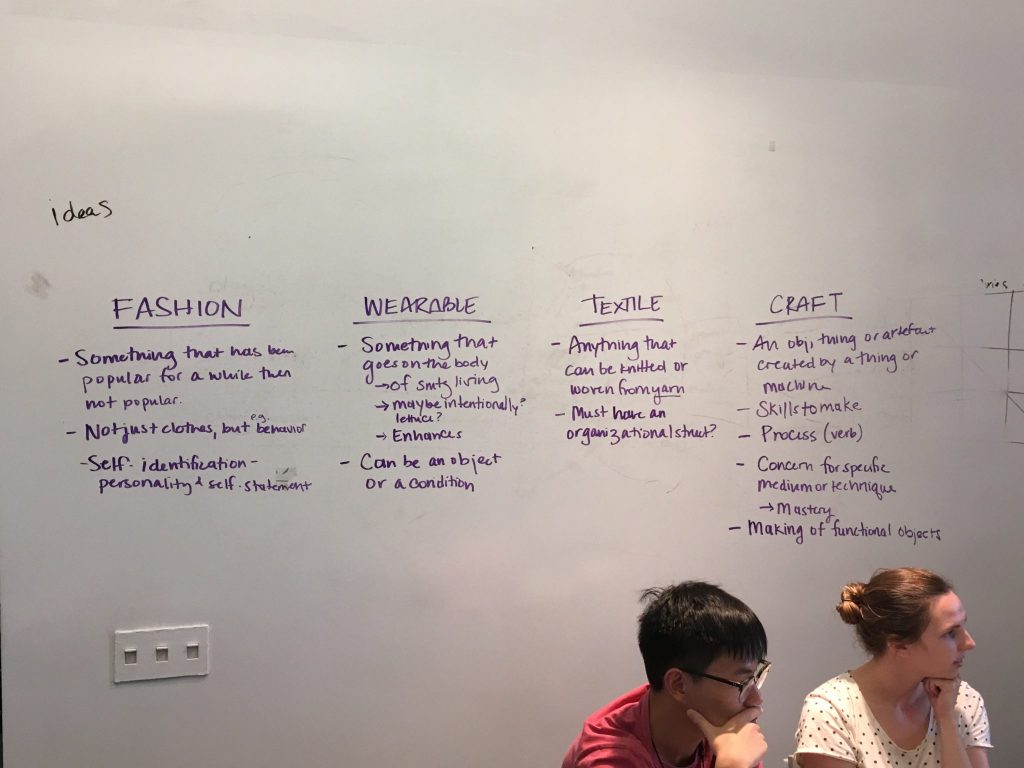
ROUND 2
Each group received a second word, then created a new definition (in green).
Timelines
The goal of this activity is three-fold: (1) to introduce you to a range of eTextile, eCraft, wearable technology, and fashion technology projects; (2) put this practice in a historical narrative and context; and (3) to surface assumptions about the ways in which the materials, aesthetics, form, and presentation of a project influence how it is perceived along a technological timeline. Does a soft artefact belong to a earlier era than a hard one? What makes it difficult to tell which came first? Where do we currently stand in these fields in terms of innovation? Where might we be going based on where we’ve been? What gaps do you see?
ROUND 1: Small Group Timelines
Each group received a stack of 37 cards each containing a project. Their goal was to choose 20 projects and arrange them chronologically in 10 minutes.
- Group 1
- Group 2
- Group 3
ROUND 2: Big Group Timeline
As a class, we then combined all group cards into a larger timeline.
- Picking and choosing
- Moving around
You can find the full timeline and answers here.
Week 1 Assignment
- Get logged onto course website. Please change your username to your name.
- Find a project that excites you and that uses the materials we looked at in class. You can use one from today’s class or find something new.
- Create a post that includes, images, video, or other documentation. Write a brief paragraph explaining what it is about this project that intrigues you.
- Purchase materials listed in TOOLS today or tomorrow.
